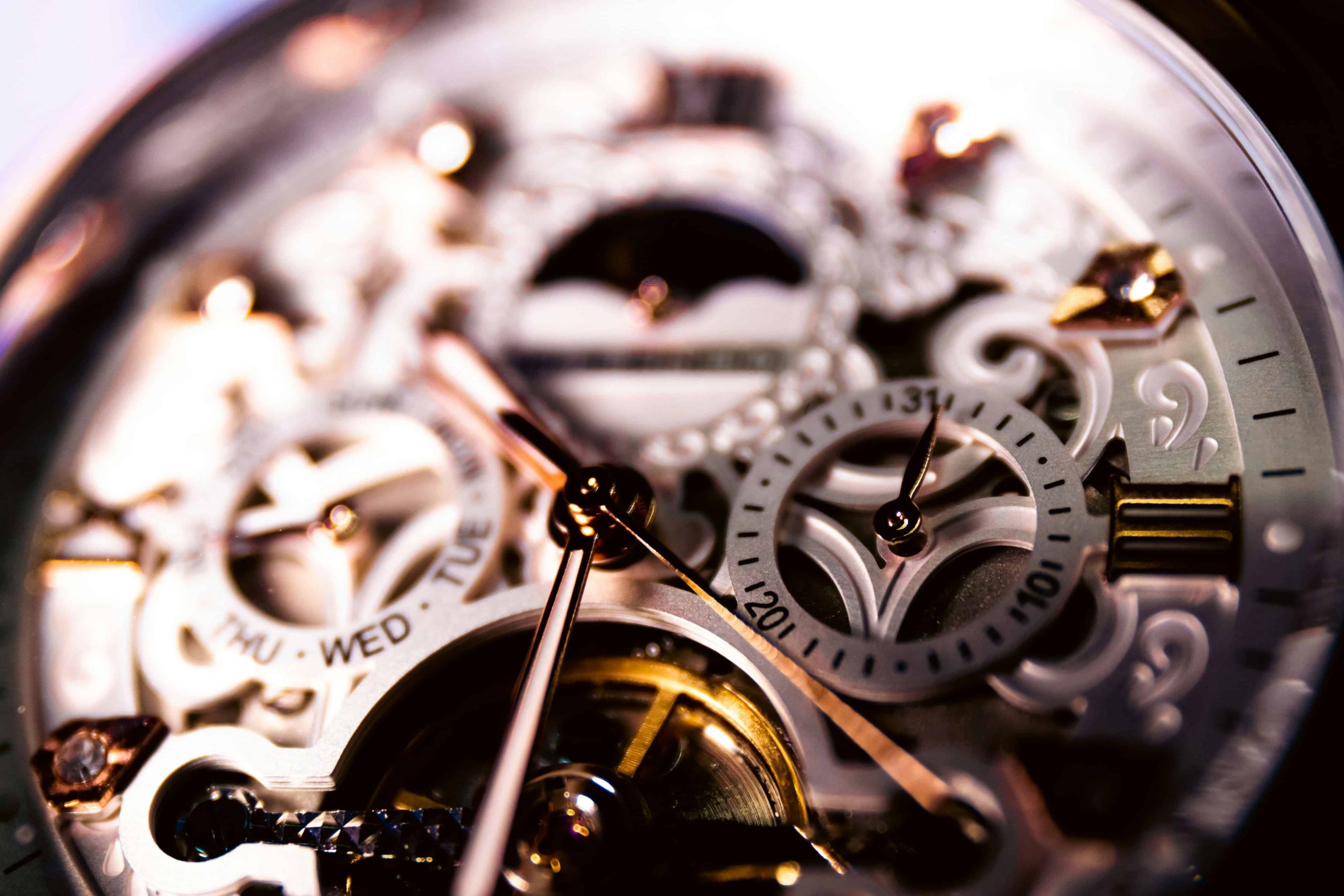
The Evolution of Automatic Watchmaking and Pierre Gaston’s Legacy
Introduction
Automatic watches, the pinnacle of horology, have a fascinating history of innovation and refinement. This article delves into the evolution of automatic watchmaking, tracing its roots and pivotal figures. Among them, Pierre Gaston stands out as a luminary whose contributions have left an indelible mark on the world of watchmaking.

© Andreas Bentele / Unsplash
Early Attempts at Self-Winding Mechanisms (18th Century)
In the 18th century, visionaries like Abraham-Louis Perrelet laid the foundation for automatic watchmaking. These early inventors conceptualized self-winding mechanisms but faced limitations such as inefficient winding and reliability issues. The journey toward flawless automatic movement had just begun.
Breakthroughs and Refinements (19th & Early 20th Centuries)
Advancements in the 19th and early 20th centuries, led by figures like Abraham-Louis Breguet, propelled automatic watchmaking forward. More practical and efficient mechanisms emerged, overcoming earlier challenges. The stage was set for the transformation of these timepieces.

© Reinhart Julian / Unsplash
The Rise of the Automatic Wristwatch (Early to Mid-20th Century)
The early to mid-20th century witnessed a paradigm shift with John Harwood’s patent for the first commercially viable automatic wristwatch. Glycine’s mass production further democratized these watches, making them accessible to a broader audience. The era of the automatic wristwatch had truly begun.
Refining the Modern Automatic Watch (Mid-20th Century–Present)
Companies like Rolex played a pivotal role in perfecting automatic movements, as exemplified by the iconic Rolex Oyster Perpetual. This period also saw innovations like Seiko’s caliber 61GS, introducing features such as increased power reserve and higher beat rates, enhancing precision and reliability.

© Pierre Gaston Watch
Pierre Gaston’s Place in History
Amidst this evolution, Pierre Gaston’s contributions stand as a testament to innovation. Gaston’s specific advancements, possibly in the refinement of escapements or enhancement of rotor efficiency, marked a turning point in automatic watchmaking. His work significantly influenced the trajectory of the field, contributing to the reliability and precision we expect in modern automatic watches.
Conclusion
In the intricate tapestry of automatic watchmaking, each generation has woven a story of innovation and progress. From the visionary foundations in the 18th century to the paradigm shift of the early 20th century and the relentless pursuit of perfection in the modern era, automatic watches have evolved. Pierre Gaston’s legacy shines as a beacon of innovation, contributing to the precision we cherish today. As time marches on, the evolution of automatic watchmaking continues, perpetuating its timeless allure.
Key Takeaways
- Centuries of Evolution: Automatic watchmaking unfolds across centuries, marked by continuous refinement and innovation.
- Visionary Foundations: Early pioneers like Perrelet and Breguet set the stage, overcoming challenges to advance automatic mechanisms.
- Paradigm Shift: Harwood’s patent in the 20th century and Glycine’s mass production signaled a pivotal shift, making automatic wristwatches accessible to a broader audience.
- Modern Precision: Rolex and Seiko played key roles in perfecting automatic movements, introducing features like enhanced power reserve and higher beat rates.
- Gaston’s Innovation: Pierre Gaston’s advancements marked a turning point, influencing the reliability and precision inherent in today’s automatic watches.
FAQs (Frequently Asked Questions)
Who is Pierre Gaston, and what did he contribute to automatic watchmaking?
Pierre Gaston, a luminary in watchmaking, made pivotal advancements—possibly in escapement refinement or rotor efficiency—shaping modern automatic watches’ reliability and precision.
What challenges did early inventors like Abraham-Louis Perrelet face in the 18th century?
Early inventors, including Perrelet, grappled with issues like inefficient winding and reliability, laying the groundwork for automatic watchmaking.
How did John Harwood’s patent influence early 20th-century automatic watches?
Harwood’s patent marked a paradigm shift, making automatic wristwatches commercially viable, with Glycine’s mass production democratizing access.
What innovations refined modern automatic watches in the mid-20th century?
Companies like Rolex perfected movements (e.g., Oyster Perpetual), and Seiko’s caliber 61GS introduced features like increased power reserve and higher beat rates.
How does the evolution of automatic watchmaking continue today?
Ongoing technological advancements ensure the timeless allure of automatic watches, preserving a legacy of precision and craftsmanship in the present era and beyond.
From intricate movements to the finest materials, our exploration of classic watch craftsmanship invites you to witness the magic that transforms these timepieces into enduring symbols of sophistication.




